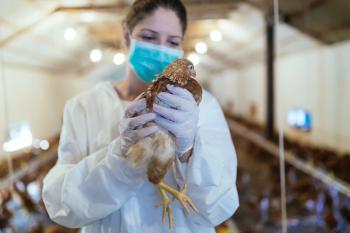
MOA of Testing Platforms for Respiratory Infections
Jacinda Abdul-Mutakabbir, PharmD, examines the mechanisms of action of the different respiratory viral infection tests.
Episodes in this series

Tina Tan, MD: JAM, can you talk a little bit about the mechanism of action of these different viral testing platforms?
Jacinda Abdul-Mutakabbir, PharmD: Absolutely. It’s important that we talk about the different types of tests, which some people alluded to and described previously. We have our antigen test, which is more likely to be used. It’s the test folks are going to be using at home. It tests for a particular piece of COVID-19 or SARS-CoV-2 for that spike protein. Once the rapid antigen test detects it, you get that positive result. If it does not, then you get a negative result.
Then we have PCR [polymerase chain reaction] tests, which are some of my favorites, but maybe that’s the scientist in me. They’re amazing. They’re called NAAT, or nucleic acid amplification test. PCR is a type of NAAT. In general, NAATs amplify the RNAs that are turned into DNA, and then the DNA is ultimately amplified. We can see if the DNA is consistent with the DNA of the virus.
What’s really interesting and amazing about these NAATs is that they can exist in very different forms. We have a PCR test, which is the way the RNA is turned into DNA and then amplified. Then we have our TMA test, which is our transcription-mediated amplification test. With these different tests, these are most likely used for COVID-19 anyway, and PCR is much more likely used for influenza. These different tests use various ways that they can find the smallest part of SARS-CoV-2, influenza, and RSV [respiratory syncytial virus]. Even if you have been exposed and aren’t showing symptoms—you’re asymptomatic—you’re likely to get that PCR test. Because the antigen test is going to be for people who have symptoms, they are a few days removed from being infected.
Then we have antibody tests, which had a lot of prominence. Correct me if I’m wrong, but I saw everyone getting an antibody test when COVID-19 was something that we were beginning to talk about in 2020. Everyone wanted to know if they had been exposed. That’s what our antibody tests do: they let us know if we’ve immediately been exposed and if we have antibodies. For COVID-19, we have 2 antibody tests. The nucleocapsid antibody test is qualitative and can say if you’ve been infected with COVID-19, so it’s a positive or negative thing. Then we have spike protein antibody tests, which tell you the number of antibodies you have. This is what everybody wants to know: how much protection do I have? Those are 3 different tests, or the 3 tests you can use for the antibody test.
However, that’s not a test that you want to get when you want to detect if you have an acute infection and you’re infected right now. That’s more to determine if you’ve been infected. Also, if you’ve been vaccinated, then an antibody test won’t be able to detect if you’re infected, or whether there’s we’re seeing antibodies because individuals have been vaccinated and made antibodies from that. We have those 3 tests and 3 ways that we can detect infection. That’s very exciting.
Tina Tan, MD: What combination of viral testing is the most commonly used in the clinical setting?
Jacinda Abdul-Mutakabbir, PharmD: Priya hinted toward this: the “fluvid” [influenza and COVID-19] test. We have a combined test you can use. A lot of individuals are using it in terms of trying to distinguish whether infections are there. Then you end up in this place: what if it comes back positive, and positive for which infection? You move back into this circle of trying to chase what infection it is. If you have a patient who continues to present with symptoms, and we do still not know what infection it’s specifically for, then you move to that PCR testing. There, you can amplify, as we said, that DNA information. Find out which is consistent and figure out what the patient is infected with.
Transcript edited for clarity
Newsletter
Stay ahead of emerging infectious disease threats with expert insights and breaking research. Subscribe now to get updates delivered straight to your inbox.






































































































































































































































































































































